
The Congo Free State, also known as the Independent State of the Congo, was a large state and absolute monarchy in Central Africa from 1885 to 1908. It was privately owned by and in a personal union with Leopold II of Belgium; it was not a part of, nor did it belong to, the Kingdom of Belgium, of which he was the constitutional monarch. Leopold was able to seize the region by convincing other European states at the Berlin Conference on Africa that he was involved in humanitarian and philanthropic work and would not tax trade. Via the International Association of the Congo, he was able to lay claim to most of the Congo Basin. On 29 May 1885, after the closure of the Berlin Conference, the king announced that he planned to name his possessions "the Congo Free State", an appellation which was not yet used at the Berlin Conference and which officially replaced "International Association of the Congo" on 1 August 1885. The Congo Free State operated as a separate nation from Belgium, in a personal union with its King. It was privately controlled by Leopold II, although he never personally visited the state.

The Kongo people are a Bantu ethnic group primarily defined as the speakers of Kikongo. Subgroups contain Beembe, Bwende, Vili, Sundi, Yombe, Dondo and Lari, Basansala, Bazombo, Musidamba, and others.
Jan Vansina was a Belgian historian and anthropologist regarded as an authority on the history of Central Africa, especially of what is now the Democratic Republic of the Congo, Rwanda, and Burundi. He was a major innovator in the historical methodology of oral history. As a professor at the University of Wisconsin–Madison, he taught several generations of students and, according to a biographer, "set the pace in African historical studies from the 1950s into the 1990s."
Cimbebasia was the name given for a long time to the western part of Southern Africa. Its borders in the north were the Kunene River, the lower Kasai River and the western reaches of the Zambezi River.
The Roman Catholic Archdiocese of Kananga is the Metropolitan See for the Ecclesiastical province of Kananga in the Democratic Republic of the Congo.
The Archdiocese of Kinshasa is an archdiocese of the Roman Catholic Church in the Democratic Republic of the Congo. Its ecclesiastic territory includes the capital city of Kinshasa and surrounding districts. The archdiocese is the metropolitan see for the Ecclesiastical Province of Kinshasa. The current archbishop is Fridolin Ambongo Besungu.
The Roman Catholic Diocese of Lisala is a Latin Catholic diocese in the Ecclesiastical province of Mbandaka-Bikoro in the Democratic Republic of the Congo, named after its see, located in the city of Lisala.
The Roman Catholic Vicariate Apostolic of the Congo, the administrative region covering Catholic mission activity in the Congo area of Central Africa, was by the end of the nineteenth century already fragmented.
The Roman Catholic Apostolic Prefecture of Kwango was a mission territory in Central Africa set up at the end of the nineteenth century.
The Roman Catholic Prefecture Apostolic of Upper Kassai was a mission territory in the Belgian Congo. It was erected as a simple mission in 1901, and detached, as a prefecture Apostolic, from the Vicariate of Belgian Congo, on 20 August 1901.

William Henry Sheppard was one of the earliest African Americans to become a missionary for the Presbyterian Church. He spent 20 years in Africa, primarily in and around the Congo Free State, and is best known for his efforts to publicize the atrocities committed against the Kuba and other Congolese peoples by King Leopold II's Force Publique.
The Compagnie du Kasai was a Belgian company established to exploit the resources of the Kasai River basin in the Congo Free State. At first it was mainly involved in harvesting wild rubber, but later moved into palm oil and mining.
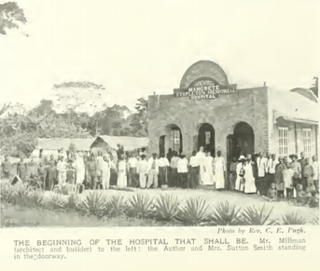
Yakusu was a mission in the Democratic Republic of the Congo, on the Congo River just west and downstream of Kisangani.
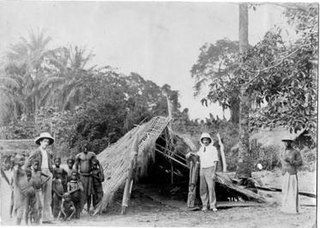
Yalemba was a mission of the Baptist Missionary Society (BMS) in the Democratic Republic of the Congo, lying on the north bank of the Congo River between Basoko and Yangambi.
Lingomo is a community in Tshuapa province of the Democratic Republic of the Congo.
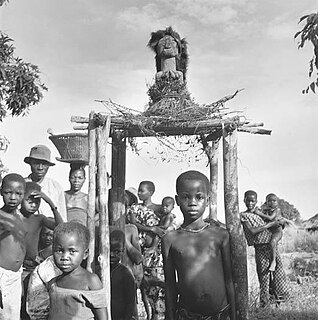
The Zappo Zap were a group of Songye people from the eastern Kasaï region in what today is the Democratic Republic of the Congo. They acted as allies of the Congo Free State authorities, while trading in ivory, rubber and slaves. In 1899 they were sent out by the colonial administration to collect taxes. They massacred many villagers, causing an international outcry.
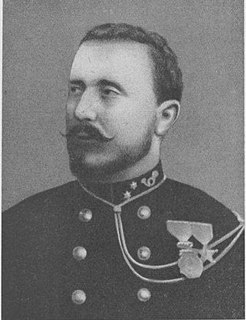
Paul-Amédée Le Marinel (1858–1912) was an American-born officer in the Belgian army who became an explorer and administrator in the Congo Free State. He was best known for his expedition to Katanga in 1891.
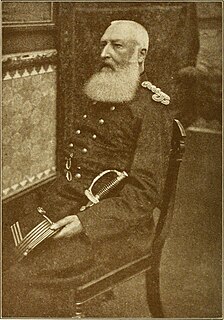
In the period from 1885 to 1908, many well-documented atrocities were perpetrated in the Congo Free State which, at the time, was a state under the absolute rule of King Leopold II of the Belgians. These atrocities were particularly associated with the labour policies used to collect natural rubber for export. Together with epidemic disease, famine, and a falling birth rate caused by these disruptions, the atrocities contributed to a sharp decline in the Congolese population. The magnitude of the population fall over the period is disputed, with modern estimates ranging from 1.5 million to 13 million.
The Lubudi River is a tributary of the Sankuru River in the Democratic Republic of the Congo (DRC). The mouth of the river is in the Kuba Chiefdom of the Mweka Territory in Kasai Province.

Althea Maria Brown Edmiston was an African-American teacher and Presbyterian missionary, working in the Belgian Congo for more than thirty years. She compiled the first dictionary and grammar for Bushong, the language of the Kuba Kingdom.









